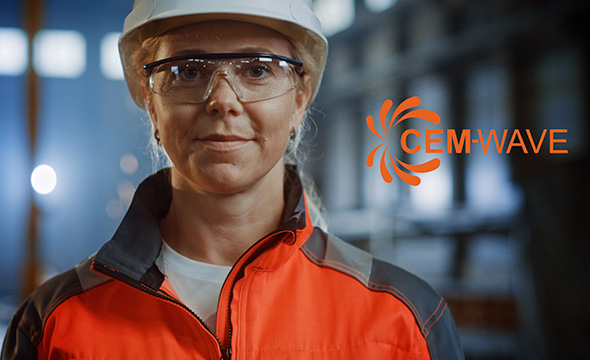Progress
CEM-WAVE Project Key Progress & Outcomes
The CEM-WAVE project continues to make significant strides in developing cutting-edge Ceramic-Matrix Composites (CMCs) and advanced processing technologies aimed at transforming energy-intensive industries. Throughout the project, our consortium has achieved remarkable milestones that push the boundaries of high-temperature materials and manufacturing efficiency.
From the successful testing of CMC tubular prototypes under extreme hydrogen environments, to advancements in coating, joining, and manufacturing technologies, each breakthrough is a testament to our commitment to enhancing performance, durability, and sustainability in industrial applications.
Below, we summarize the key accomplishments that demonstrate the project's potential to revolutionize materials processing and pave the way for greener, more efficient industrial systems.
CEM-WAVE PROJECT |KEY OUTCOMES
- Al2O3f/AlPO4/Al2O3 and SiCf/(SiC/BN)3/SiC (coated with a YAS-based EBC) CMC tubular prototypes (10 cm diameter, 10 cm length, 0.3 cm thickness) survived to 3 hours-long tests, respectively at 900°C and 1100°C, under 100% H2 atmosphere.
- The CMC tubular prototypes have been validated in a peculiar radiant tube pilot furnace designed and developed for high-temperature corrosion testing of refractories under different H2/biogas blends (up to 100% H2 content).
- Uniform interphase coating deposition of oxide and non-oxide ceramic fibres and manufacturing of highly porous square and tubular-shaped CMC preforms.
- Design and development of a 2 kW x 3 MW Solid-State sources system prototype covering the whole 2.4-2.5 GHz ISM frequency band (1 MHz step).
- Improved MW-CVI processing of 10x10x0.3 cm3 and tubular-shaped (10 cm diameter, 12.7 cm length, 0.3 cm wall thickness) SiCf/SiC samples abating the processing times of about one order of magnitude.
- Development of a low-cost pre-preg technique for Al2O3f/LaPO4/Al2O3 CMCs manufacturing characterized by high strength, high toughness and good resistance to long term thermal ageing.
- Acquisition of realistic numerical simulation domains from μCT scans and SEM micrographs and definition of laws providing the evolution of geometrical and transfer properties as a function of the fiber volume fraction and porosity degree for modelling of TG-CVI processes.
- Development, characterization and testing of joining materials for both oxide (glass-ceramics – Y2Ti2O7 main cristallyne phase) and non-oxide (YAS, Yttria-Alumina-Silica) CMCs and YAS-based EBC coatings. The joining materials displayed max joint in-service temperature in relevant environment respectively of 900°C and 1200°C.
- Development of Braided CMC Technologies, SiC-CVI joining process and novel Direct Liquid Injection Chemical Vapour Deposition (DLI-CVD) EBCs.
- Development of advanced monitoring tools with program routines to acquire, store and process MW-CVI trials data for automatic operating parameters optimization.
The CEM-WAVE project aims at introducing to European industries an innovative CMC production process, based on Microwave-assisted Chemical Vapour Infiltration (MW-CVI) technologies making CMCs application sustainable for process industries in energy-intensive sectors such as steelmaking. In particular, the final goal will be to test a CMC tubular-shaped prototype to be applied in future relevant environment, characterized by increasing hydrogen contents, for their application in radiant tube furnaces in steelmaking industries.
In order to reach this goal, the CEM-WAVE consortium members have been working hard to allow a wider application of these materials, such as:
- Flexible fiber coating and CMC preforms manufacturing routes suitable for the next infiltration processing;
- Development of rapid and easier joining technologies for the manufacturing of complex CMCs components;
- Upgrade of the MW-CVI process by implementation of the latest MW solid-state sources to finely tailor the MW heating parameters while allowing for this technology automation;
- Thermo-mechanical and corrosion resistance characterization of CMCs in relevant environment;
- MW-CVI process numerical modelling for the processing parameters optimization and scale-up considerations;
In the upcoming video, we delve into the project's research, explain the adaptations implemented, and present the initial outcomes of the project.



